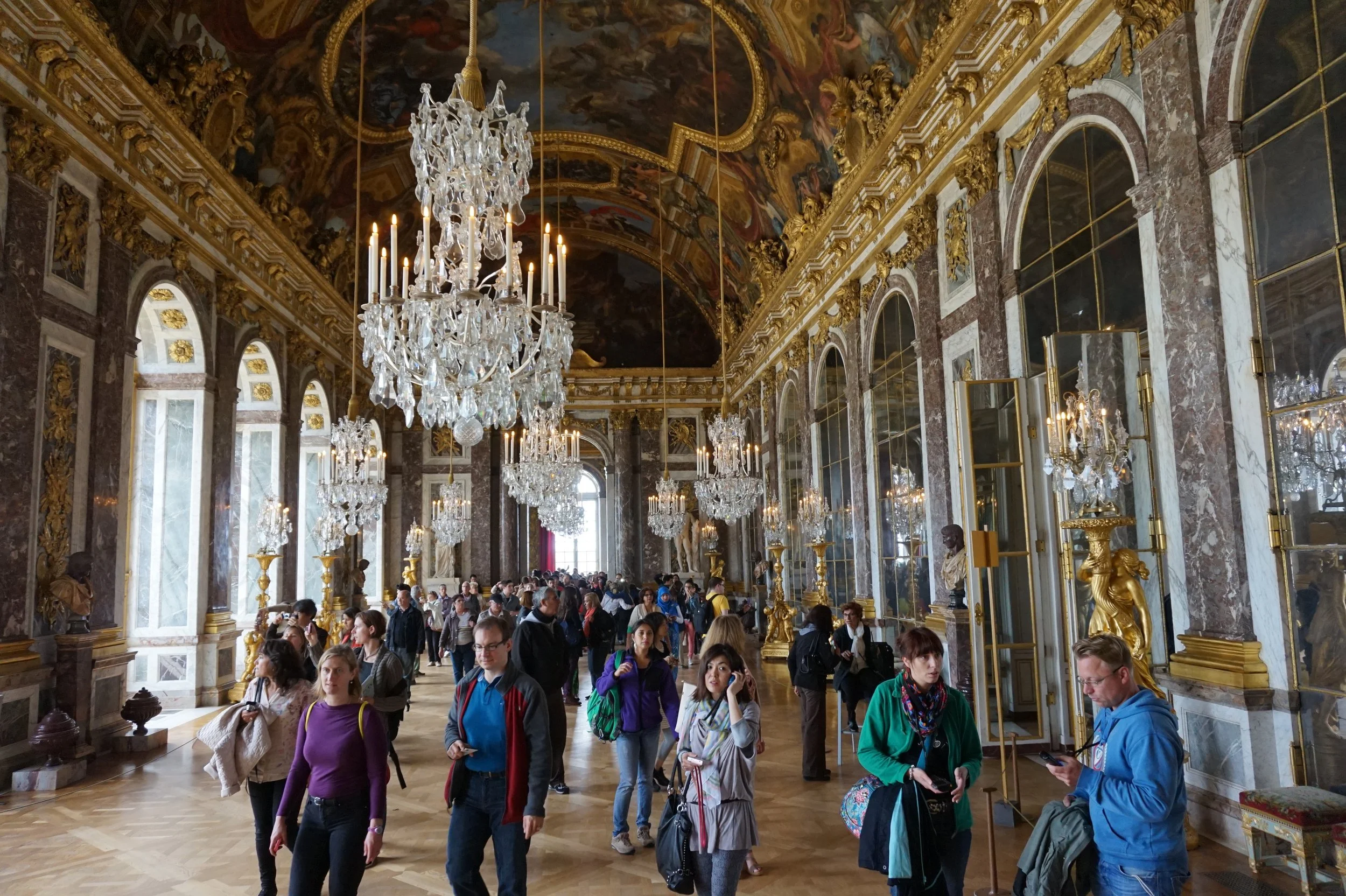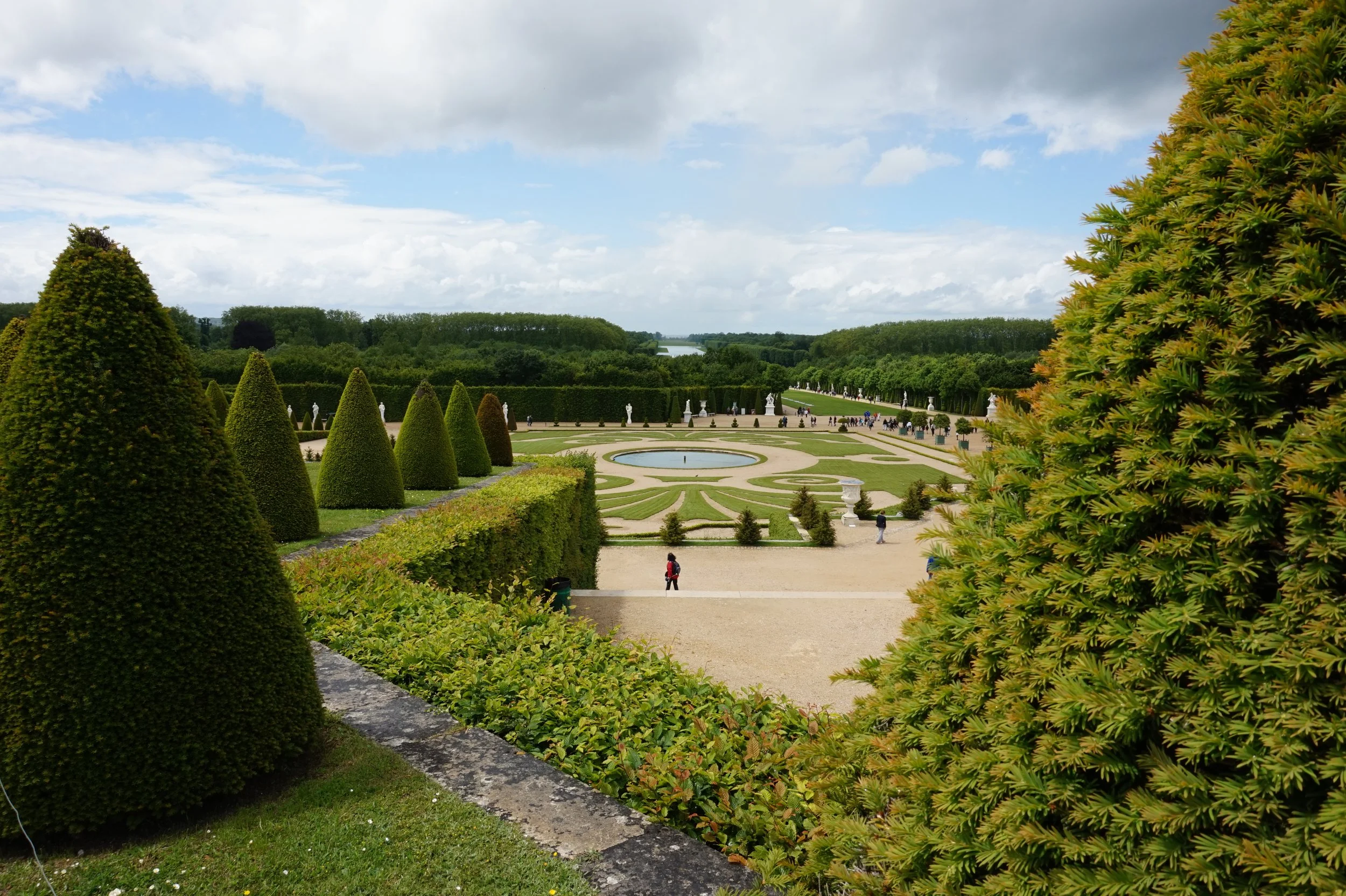France. Louis XIV’s Edifice of Culture and Power
Visiting Paris? If you’re a history junkie like me I recommend a visit to the Palace of Versailles. From Paris, you can reach Versailles in about an hour by car or bus. The palace and its gardens are owned by the French Government and managed through the Ministry of Culture. Future King Louis XIII (1601-1643) made his first trip to Versailles in August 1607 to hunt pheasants, deer, and wild boar and in 1623 he had a hunting lodge built there. It was Louis XIII’s son, Louis XIV (aka the Sun King), who expanded the château into a much larger palace complex. Louis XIV arranged for the palace’s layout to extend east/west to follow the sun’s celestial path. Following victory over the Spanish during the War of Devolution (1667-1668), Louis XIV designated Versailles as the king’s official residence and in 1682 he transferred his royal court there. Among other factors, the palace was important to the king’s political ambitions through its projection of French culture and power. In part because of lavish parties held there, the palace gained a reputation as a place of decadence and self-indulgence.
Expansion of the palace was an on again, off again affair. With limited funding, work stopped during the Nine Year’s War (1688-1699) and again during the War of Spanish Succession (1701-1714). During this time several well-known guests visited including Mozart in 1763. Two of three treaties that ended the American War of Independence were signed at Versailles in 1783. Despite its growing political importance, the palace’s status as a seat of power was short-lived. When the Bastille was attacked during the 1789 French Revolution, the Royal Family quickly returned to Paris. Subsequently, the palace was abandoned. Coming to power in 1804, French Emperor Napolean Bonaparte preferred the Grand Trianon over Versailles as a summer residence. Major repairs were made to the palace after the Bourbon Restoration and return of the monarchy. In lieu of using Versailles for official purposes, King Philippe I ordered the palace converted into a museum of French history.
Versailles was occupied by the General Staff of the German Army during the Franco-Russian War (1870-1871) with many of its rooms used to care for wounded soldiers. At the end of the First World War (1914-1918), the palace’s Hall of Mirrors was the site for the signing of a peace treaty that ended hostilities and specified war reparations to be paid to the Allies. After the war, American businessman John D. Rockefeller, Jr. donated US$2.1 million (equivalent to $38 million today) to assist in the refurbishment of the palace. Hoping to bolster tourism, the French Government began efforts to restore building and purchase original furniture during the 1950s. Monarchs and presidents have visited Versailles including U.S. President John F. Kennedy, British Queen Elizabeth II, and Russian President Boris Yeltsin. Today, the palace has about 15 million annual visitors.
Arriving by bus, we disembarked in a wide plaza known as Place d‘Armes. The plaza faces Avenue de Paris and a bronze equestrian statue of Louis XIV. Extending westward is the “Royal Walk” flanked by rows of trees and ending at a statue of Apollo. Westward from the statue is a 60-meter by 1.6-kilometer waterway called the Grand Canal that was once used by venetian style gondolas. We passed through a section of Versailles’ famous gardens, organized as a series of axial pathways with hedges, flowerbeds, ponds, and open spaces. Subsequently, we passed through the Royal Gate and into a compound with a statue of Louis XIV at the center. Adorned with gold leaf, the gate is a reproduction of the original entranceway from the 1680s that was destroyed during the French Revolution.
The Hall of Mirrors is a 70-meter-long gallery that stretches between the king’s and queen’s suites. Completed in 1681, it was built on the site of a former open terrace. The gallery is named for seventeen windows and 578 mirrors. Above are glass chandeliers that hang from the ornately painted ceiling. On opposite ends of the gallery are the Salon of Peace and the Salon of War. I tried to imagine what the hall looked like 340 years ago when dozens of servants wearing powdered wigs attended to members of the Royal Family.
Versailles’ royal apartments include the king’s suite with five rooms and the queen’s suite on the opposite side of the building with four rooms. We walked through the king and queen’s large bedchambers. On each side of the palace, the ground drops to a terrace decorated with pools and statues. More than 32 kilometers of underground water pipes support the palaces fountains and other water features.






